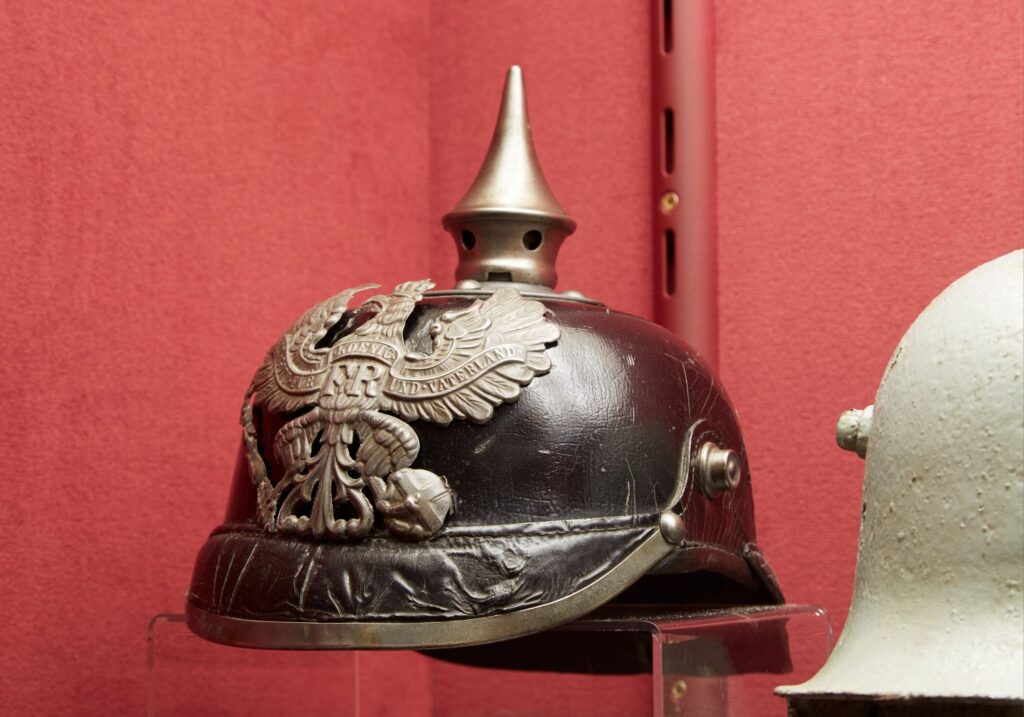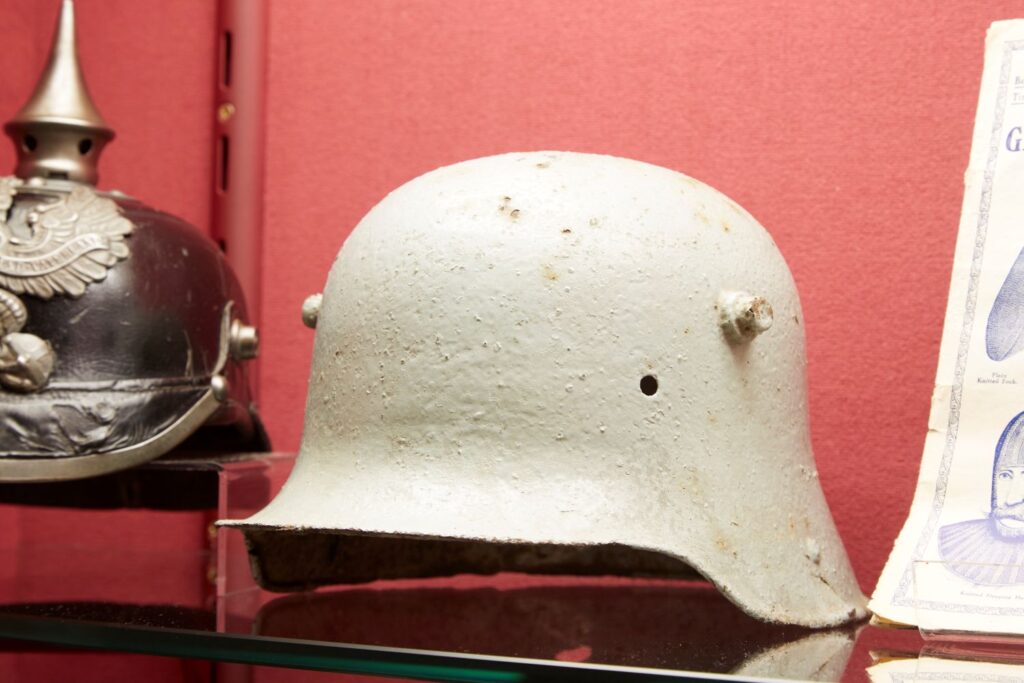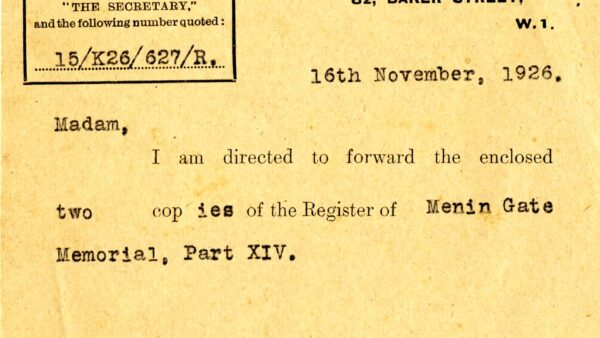Helmets of the Great War: The Pickelhaube, the Coal Scuttle and the Brodie “Battle Bowler”
Ed Tooker, Documenting Northern Lincolnshire's History Project Volunteer
At the start of The Great War, German soldiers wore The Pickelhaube helmet, or in English, the spiked bonnet. This was perfect for grand parades and peacetime. But far less practical for the demands of trench warfare as experienced on the battlefields of France and Belgium. It was mainly constructed of leather. The metal pieces were purely ornamental. This offered troops very little protection against artillery shells. These shells were normally designed to burst in the air and rain down shrapnel, that is metal fragments, onto the heads of the enemy soldiers. In early 1916, this helmet was replaced for those on active service by the Stahlhelm or steel helmet popularly known as the “coal scuttle”.
The soldiers of the British Expeditionary Force that initially went to the Western Front in 1914 did not even have the limited protection offered by the Pickelhaube helmet issued to the German soldiers. They had usually only been issued with fabric service or forage caps. The Brodie helmet we see pictured below, that we so associate with images of Tommies, began to be issued in September 1915. By the summer of 1916 Brodie’s had been issued to all British Troops.
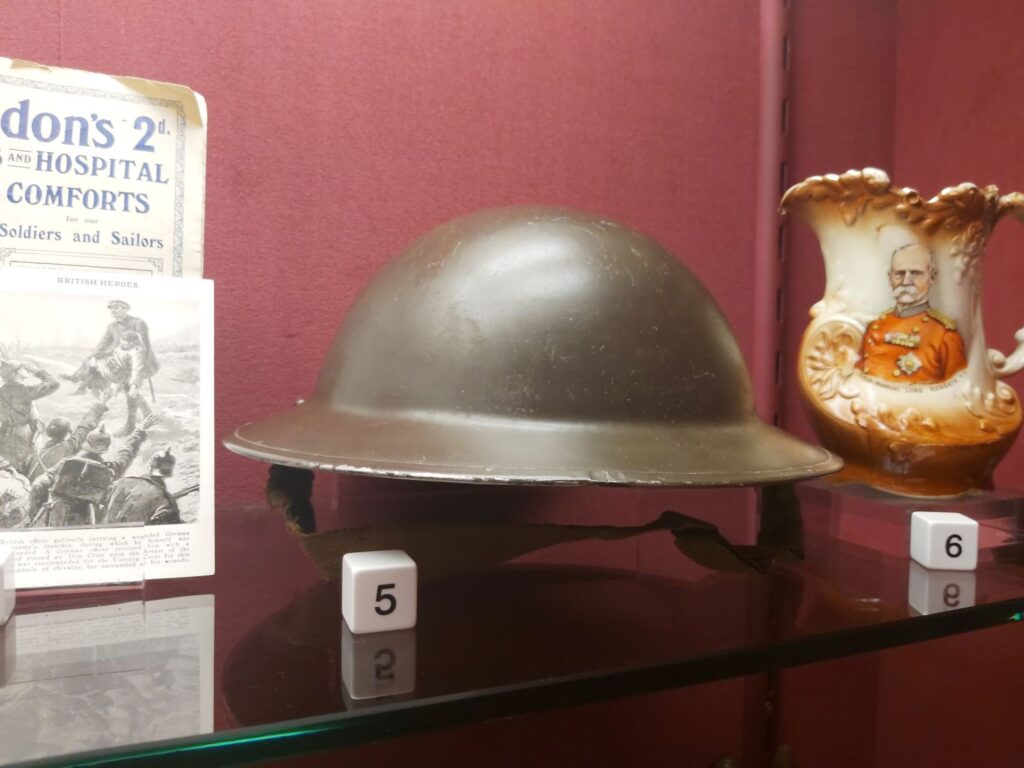
These were not the only headgear that Allied soldiers would wear on the Western Front. Whilst part of a team of dedicated volunteers helping to digitise the local history collections here at the North Lincolnshire Museum in Scunthorpe, I was able to review some First World War artefacts that had been donated by members of the public. These included copies of the Penny War Weekly magazine.
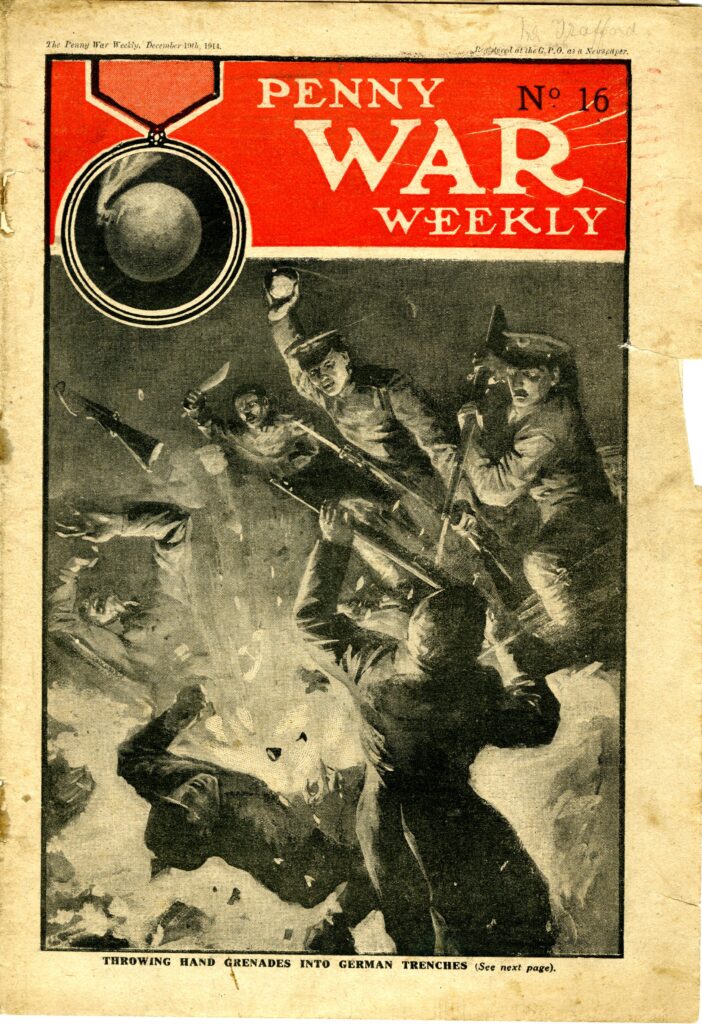
One of these magazines features the story of the incredible bravery of some of the Indian troops fighting alongside the British troops. They had all sustained wounds to their left hands grasping the bayonets of attacking German troops during hand-to-hand combat in the trenches. Although the description of India as the Sunny East and the giving of gifts of cigarettes may seem rather dated to modern eyes, it shows the often overlooked great contribution these men made to the Allied cause.
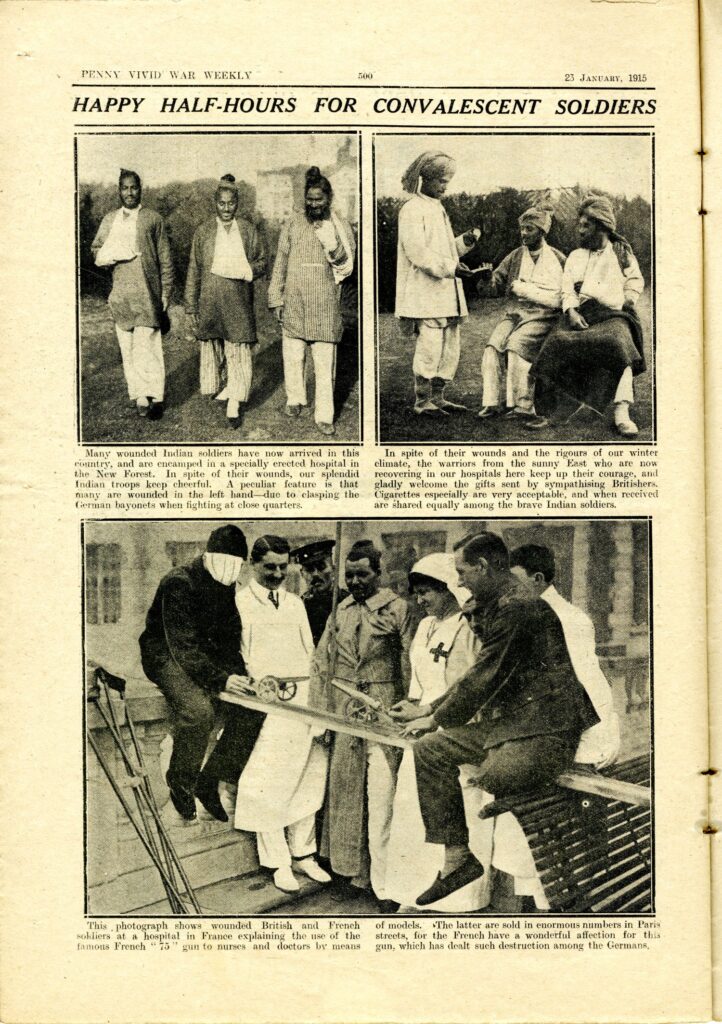
Surviving images and records suggest many of these soldiers often wore very different types of headgear, of which there were at least 12 different known types. For example, Sikh soldiers usually wore turbans for religious reasons, in preference to steel helmets. Over 1 million Indian soldiers served overseas during the First World War and over 60,000 of these men lost their lives. They served alongside British soldiers such as Private Archibald Brown from Winterton near Scunthorpe, part of whose story can be found on this website and by following the link below.


